by Mitch Hauschildt, MA, ATC, CSCS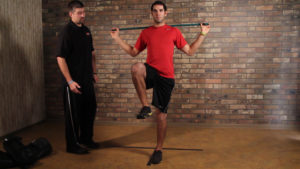
Its interesting to look back over the years at all of the tools, machines and implements that we have used over the past 18 years that I have been practicing as an athletic trainer and strength coach. During that time, I have worked in a small physical therapy clinic, a hospital based sports training and therapy facility, another hospital based performance facility, a personal training studio, professional baseball and now a NCAA Division I university. I have seen a ton of equipment, toys and trinkets. The concept of improving function has evolved from isolation equipment, such as isokinetic strength machines and selectorizied equipment, to trying to stand on stability balls to using extremly unstable implements such as slosh pipes. All of these strategies were considered state of the art at some point in time and each brought it’s own advantages and disadvantages. Thankfully, we learn more about the human body over time and how to train it more efficiently and our strategies and tools improve over time.
As it stands right now, I am more “minimalist” than I have ever been with the equipment that I used as my treatment approach to improving movement quality. Whether I’m training injured or non-injured patients, I find myself doing a lot more with less equipment than I ever have. I utilize bodyweight movements when possible and a few simple tools that can be easily thrown in the trunk of a car and taken from place to place. I don’t need to do that, but the reality is that my training fits that mold and literally can be taken anywhere.
As much as I love bodyweight training and believe that we can correct a lot of what ails us with bodyweight movement, the reality is that sometimes we need to load the body and using a few, simple tools, we can significantly accelerate the correction process. The body also benefits greatly from soft tissue work and items that facilitate the nervous system via the skin. My approach to improving movement quality has evolved to simple forms of load, versatility and improved tissue quality.
Here are the 6 items that make up my movement quality toolbox (they are listed in alphabetical order in an effort to prevent the tendency for people to believe that I have ranked them in any level of importance – I honestly love them all and use them in a variety of different orders and progressions, depending upon the needs of my patient/client).
- Blades: I love me some Instrument Assisted Soft Tissue
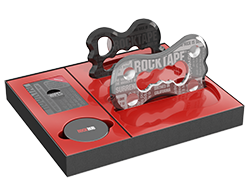 Mobilization (IASTM) and the Blades from Rocktape are far and away the best tools for the money on the market (and I’ve used a lot of different tools), and they fit my treatment approach. IASTM has become my soft tissue technique of choice becuase I can dial in to very specific areas and/or large body parts and up regulate and down regulate the nervous system, as well as reduce pain.
Mobilization (IASTM) and the Blades from Rocktape are far and away the best tools for the money on the market (and I’ve used a lot of different tools), and they fit my treatment approach. IASTM has become my soft tissue technique of choice becuase I can dial in to very specific areas and/or large body parts and up regulate and down regulate the nervous system, as well as reduce pain.
- Kettlebells: Load accelerates motor learning, thus it is needed to lock in movement patterns. There are a ton of load options, including dumbells and barbells (which I love both of them), but you can’t beat Kettlebells for their versatility and ease of use. They can be used for strength training, neurological repatterning, and metabolic conditioning and the offset positioning of the load tends to put people in positions of success with regards to learning or refining movement patterns. It only take a few sizes, such as a 16kg, 20kg and 24kg to cover most, if not all, of your training needs.
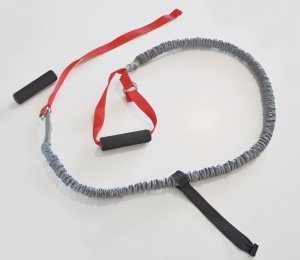
- MTS Solutions Band: It seems a little bit self serving to include a product that is designed and produced just for our purposes, but the honest truth is that it was designed to be the highest quality and most versatile band that exists in the market, so I feel the need to include it. Strategies such as conscious loading and Reactive Neuromuscular Training (RNT) are performed best with a band. The solutions band can be taken anywhere, anchored a lot of different ways, won’t break down over time, and won’t irritate those who are latex sensitive. This makes it a perfect solution (thus the name). A medium resistance will handle most movement quality exercises.
- Rocktape: Kinesiology tape is one of the easiest and most effective
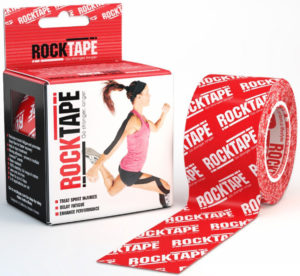 tools for plugging into the nervous system. It takes advantage of the mechanoreceptors that exist in our skin and fascial layers to supply information back to the brain. We can use tape to improve pain, posture, fluid, movement quality and a host of other things. While there are a lot of different brands of kinesiology tape on the market, Rocktape is by far the highest quality. It is no secret that I work for them, so I am a little bit biased, but I also want to be clear about the fact that I used their products far before I started working for them because they truly are the best on the market.
tools for plugging into the nervous system. It takes advantage of the mechanoreceptors that exist in our skin and fascial layers to supply information back to the brain. We can use tape to improve pain, posture, fluid, movement quality and a host of other things. While there are a lot of different brands of kinesiology tape on the market, Rocktape is by far the highest quality. It is no secret that I work for them, so I am a little bit biased, but I also want to be clear about the fact that I used their products far before I started working for them because they truly are the best on the market.
- TRX Suspension Trainer: The suspension trainer allows for
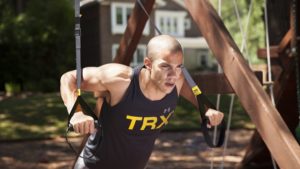 infinite variability with load. It allows us to do a lot of things that we can’t do with other tools and is extremly mobile and easy to use. While there are other suspension trainers on the market, I am partial to TRX becuase they are the highest quality and most innovative which makes the extra price worth it to me. They also have a large variety of educational programs available, making it easy to use, even if you don’t have a lot of experience with suspension training.
infinite variability with load. It allows us to do a lot of things that we can’t do with other tools and is extremly mobile and easy to use. While there are other suspension trainers on the market, I am partial to TRX becuase they are the highest quality and most innovative which makes the extra price worth it to me. They also have a large variety of educational programs available, making it easy to use, even if you don’t have a lot of experience with suspension training.
- Ultimate Sandbag: What I love about the Ultimate Sandbag is
 that it combines the advantages of load with stimulating the nervous system through subtle instability with safety and an infinite number of movement patterns and strategies. Because it is a high quality product, combined with easy cleaning, quality education and optimal handle positions, the Ultimate Sandbag stands tall over their competitors in the marketplace. If I can only choose one size, I would recommend the power bag, but I prefer to also use the core and strength bags within my programs.
that it combines the advantages of load with stimulating the nervous system through subtle instability with safety and an infinite number of movement patterns and strategies. Because it is a high quality product, combined with easy cleaning, quality education and optimal handle positions, the Ultimate Sandbag stands tall over their competitors in the marketplace. If I can only choose one size, I would recommend the power bag, but I prefer to also use the core and strength bags within my programs.
If I have more space or money, I would include a TRX Rip Trainer, Barbell with Plates, PowerBlock Dumbbells and Plyo Boxes. These are completely optional and utilized best with higher end athletes who need more significant load and complex movements.


Leave a Reply